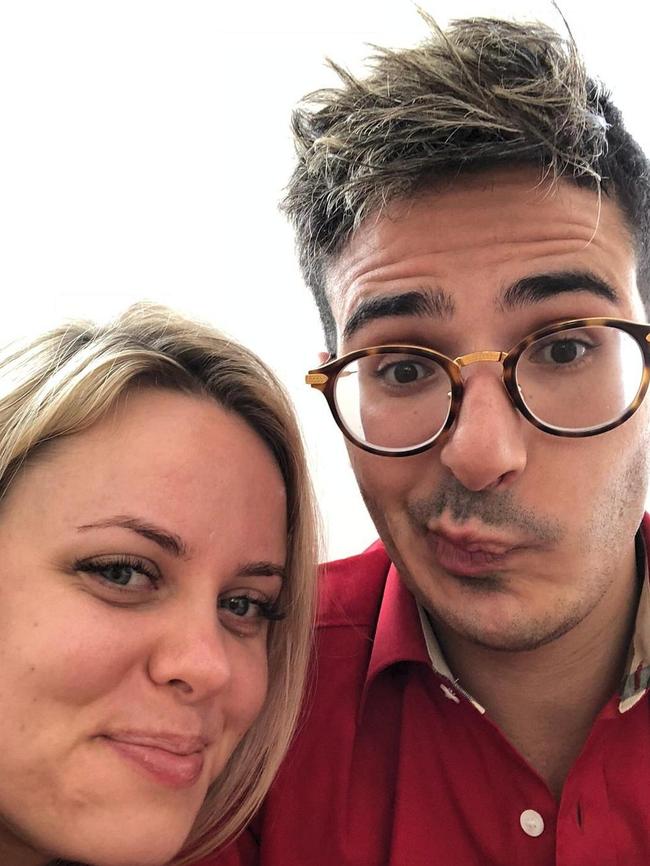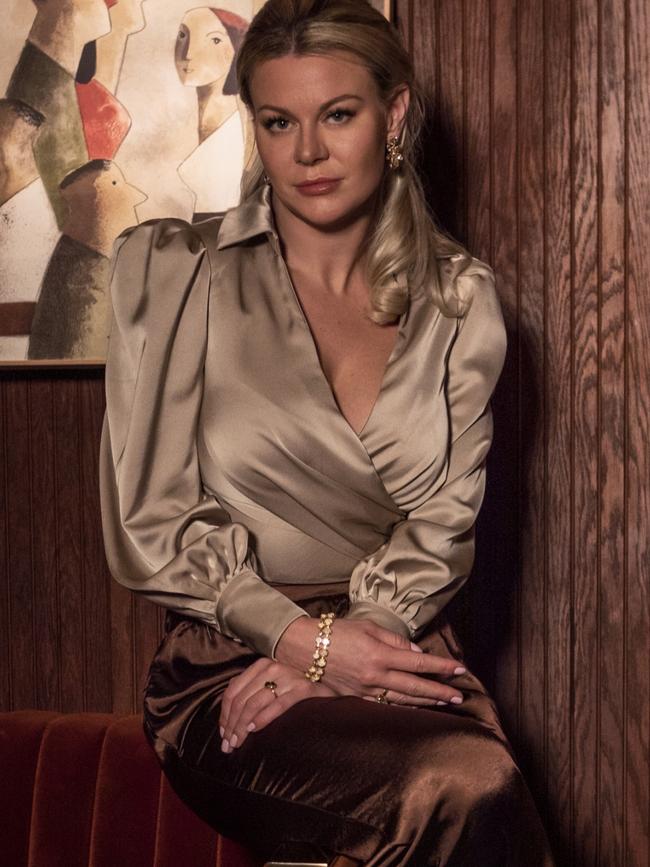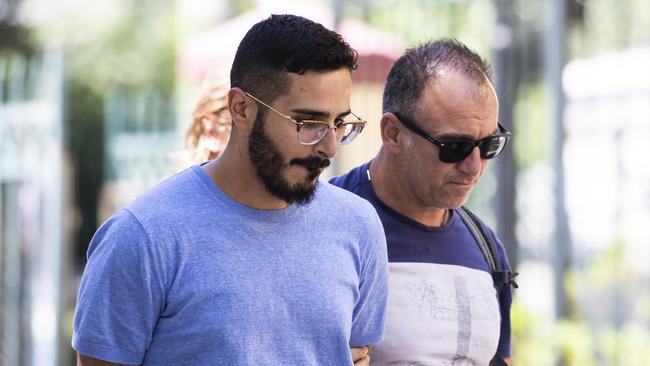‘Tinder swindler’ victims have the last word in Netflix documentary
He seemed like a perfect match on Tinder, but international playboy Simon Leviev turned out to be a 20-something grifter — and they got fleeced. Should we feel sorry for them?

Let’s call him “Leviev” for the purposes of this story – that’s how his victims knew him. He’s a flashily dressed chap, good-looking, who met his marks on dating app Tinder, romanced them in a heady whirl of private jets, five-star hotels and several thousand euros’ worth of VIP tables in Europe’s splashiest nightclubs, then fleeced them for tens of thousands – sometimes hundreds of thousands. It’s not entirely clear how many women Leviev seduced, stole from, then abandoned in an act known as catfishing. For he was not the international playboy Simon Leviev. He was just a 20-something grifter named Shimon Hayut.
Three of his most recent victims – Cecilie Fjellhoy from Norway, Pernilla Sjoholm from Sweden and Ayleen Charlotte from the Netherlands, all of whom co-operated to get Leviev arrested and imprisoned – have told their stories in a new documentary, The Tinder Swindler. It starts with Fjellhoy, a peachy-skinned, blonde computer programmer who dreams of Disney-perfect love affairs and even now clings to the idea there is a Prince Charming out there somewhere, waiting for her, despite everything. Fjellhoy – 29 years old at the time of her catfishing, freshly relocated from Norway to London, a self-described “Tinder expert” – swiped right (Tinder lexicon for “express interest”) on Simon Leviev’s profile in January 2018.

Why? “He had the kind of look I like,” she says in the film. Footage of his Tinder profile plays and viewers are introduced to Leviev as Fjellhoy was. We see him – 29 according to his profile – in a succession of photos, cross-legged, tanned and entitled on the deck of a yacht, strapped into the copilot’s seat of a helicopter, lounging in the cabin of a private jet. He is sharply dressed, groomed and above all, rich-looking and seemingly extravagant.
It wasn’t just the impression of richness that appealed to Fjellhoy, though: it was as much a question of the drive this indicated. Though, she adds, “It’s like Marilyn Monroe in the movie Gentlemen Prefer Blondes when she says, ‘Don’t you know that a man being rich is like a girl being pretty? You might not marry a girl just because she’s pretty but, my goodness, doesn’t it help?’ It’s a very true quote. You want the full package.” Fjellhoy “matched” with Leviev, who had already swiped right on her profile; within hours, they meet for a date in the lobby of the Four Seasons hotel on Park Lane in London. He tells her he’s staying there while on a business trip.
“He has this magnetism,” Fjellhoy says. “There’s something about this guy that is just special.” Leviev tells Fjellhoy he’s the CEO of LLD Diamonds, a role he inherited from his father, the real-life Lev Leviev, a man Forbes once called the “King of Diamonds” – which is why Leviev styles himself “Prince of Diamonds”. He scrolls through his phone for images that back up his stories: the Forbes cover shot of Lev Leviev, a photo of Lev with his arm slung around his “son’s” shoulder.

When Leviev is not dazzling Fjellhoy with stories of his success, he tells her about the daughter he shares with an ex, about how lonely his jetset lifestyle makes him, and how much he longs for a connection with someone. In other words, he bombards her with a semblance of intimacy, a semblance of trust, which invites her to trust him in return.
Fjellhoy spends barely an hour with Leviev, yet feels deeply connected to him. When, at the end of the date, he tells her he’s flying to Bulgaria for business on a private jet that evening and asks if she’d like to come, she agrees. They sleep together that first night, and embark on what Fjellhoy takes for a giddy, intense love affair, one that escalates quickly over three months, thanks in no small part to the amount of time Leviev and Fjellhoy spend apart while he flies around the world on business trips, exchanging loving voice messages and texts all the while.

Fjellhoy experiences it as intensely romantic in its uncertainty, its spontaneity, in the bittersweet pang of constantly missing someone. All of which is ramped up considerably by Leviev telling her that, because of the nature of the diamond business, the high stakes and multi-millions in play, he is often subject to threats of violence, and periodically has to go underground on the advice of his security team, led by a personal bodyguard called Peter.
In March 2018, Leviev asks Fjellhoy to move in with him, and to find a flat for them to share in London. Then, in April, barely 12 weeks after their first date, while Fjellhoy is out for drinks with some friends, she receives a text from Leviev that reads only, “Blood”. A second reads, “Peter, hurt” and is followed by a picture of the security guard’s battered head.
Fjellhoy freaks out. Leviev then sends confusing video messages, apparently from an ambulance, saying how “they” had wanted to kill him, but Peter saved him – the two are now safe. The following morning, she receives messages from Leviev explaining that his security team have forbidden him from using his credit cards because his “enemies” will use them to trace his location. So he needs to use her cards temporarily. “It wasn’t even a question,” Fjellhoy says. She signs over a platinum card to him, which he maxes out; then he demands that she increases her limit and flies to Amsterdam with $25,000 in cash… all of which Fjellhoy does, taking out a loan for the cash, and lying on credit card application forms for the rest.
A further week or so passes, along with more and more demands from Leviev for wired cash – $250,000 all told (“More, probably,” she’ll tell me) – before Cecilie Fjellhoy begins to wonder if everything is quite as Leviev claims. The money he keeps promising to transfer into her account in repayment never appears. Eventually, at his bidding, Fjellhoy flies back to Amsterdam where Leviev – suddenly cold towards her – gives her a cheque for $500,000. Fjellhoy returns to London, discovers that the cheque cannot be cashed, and begins to truly understand that she’s been had.

What Leviev was in fact doing in the time he claimed to be in hiding was setting up a friendship with another Tinder user, Pernilla Sjoholm, a saleswoman from Stockholm. That relationship, while not romantic (“A little short for my taste, but easy to talk to,” Sjoholm says of her first impressions of Leviev), was every bit as intense as the relationship Fjellhoy believed herself to be in.
After matching with Leviev, Sjoholm was flown from Stockholm to Amsterdam for coffee and an introductory chat, felt a non-sexual yet nevertheless profound connection with him and entered into a constant exchange of texts and FaceTime calls with him. She felt gratified and supported when he flew last-minute to Stockholm to take her out for a drink because she was having a bad day, and stood amused (if a little bored) on the sidelines of champagne-fuelled nights in clubs on the Greek island of Mykonos, which led to afterparties in $5000-a-night hotels – all of which was funded by Fjellhoy’s mounting debts.
This was how Simon Leviev – or rather, Shimon Hayut, an Israeli citizen who’d been convicted and imprisoned for fraud against three Finnish women in 2015 – operated. He worked over one woman after another after another, meeting them on Tinder, dazzling them with intense, instant emotional connection, reassuring them with the impression of intoxicating wealth, then ripping them off, so that he might dazzle then rip off the next.
Now, I know what you’re thinking. You’re thinking: great yarn, but really – silly women! How could they have fallen for that? He’s so obviously a wrong ’un! You’re thinking, my sympathy is pretty limited, TBH – that could never happen to me. I’m too smart, not nearly as easily impressed by the semblance of wealth. Or, it’s something to do with them being Scandinavian, probably: his sleaziness got lost in translation. Or, maybe it’s because they’re beautiful, so not used to the world treating them unkindly, not alert to the red flags less lovely women might pick up on. Or, it’s because they’re the Instagram generation, so caught up in the appearance of things that they’re oblivious to how things actually are.

I know you’re thinking this, because, when Norwegian newspaper VG published Fjellhoy and Sjoholm’s story – having worked with them to expose Leviev, because the authorities were only interested in pursuing Fjellhoy for the money she now owed – that’s exactly how the internet responded, and because every time I tell anyone who hasn’t yet seen the film about these two Tinder Swindler victims, that’s what they say. Not “Poor them” but “Daft them”. I thought it too – at least, watching the early part of the documentary. I tutted, “Who gets on a private jet with someone just hours after swiping right on them?” But then I met Cecilie Fjellhoy and Pernilla Sjoholm.
Fjellhoy is now 33, as bright-eyed and clear-skinned and pretty as she seems on screen. She tells me she was the golden girl of her family, before this happened, the one who never put a foot wrong (“Education, good job, apartment in Oslo…”). She’s funny, sweary, smart, both very sweet and very raw, still obviously shattered by the shame the experience inflicted on her – the shame of the scam, the shame of feeling heartbroken nonetheless at the demise of the “relationship”, the shame of being taken apart in court by the banks she owed money to, all of which were out to prove she’d been in on Leviev’s scam.
She laughs when the Netflix PR tells her she needn’t answer any questions she’s uncomfortable with and says none of them could compare to the ones put to her by the banks’ lawyers. She is capable of laughing at the more incredulous aspects of her story, and seems eternally, persistently, almost preposterously romantic. “I love love. I think I have been in love and I know I can do it again. He’s taken away enough of me; he’s not going to take away that.” But she also makes casual reference to how she became suicidal in the aftermath of Leviev’s exposure, spent time on a psychiatric ward and is now officially bankrupt. She understands why people respond to her story with disbelief, she says; once, she might have done the same. “But now I’ve become much more soft because I understand how the human brain works, and these people are good at what they do. Take out a big fishing net, you know, and there are some people that will say no, and there are some people that will say yes.”
So, I ask, why does Fjellhoy think she was one of the people who said yes to Leviev? “I think at that point in time I was, not vulnerable, but I’d just moved to London, I had done my master’s, worked part-time in a new city, didn’t know many people. I didn’t have close friends and my family weren’t here.” You had no social context? No one who knew you well, on whom you could rely to check you, question you, stop you? “Right.”
I might have wondered if Fjellhoy’s romantic streak made her ripe for Leviev’s con, except that, before meeting her, I’d already had a Zoom chat with Pernilla Sjoholm. Equally pretty, smart and bright, Sjoholm had no romantic connection with Leviev, but got conned just the same. We speak on the morning of her 35th birthday (“It’s not a situation I would want to be in at the age of 35,” she says, “fighting to get my life back”).
“What he did with Cecilie, he did it so differently,” Sjoholm says. “He adapts his personality. Like, for example, I don’t like people who are flashy and show-off, so he never did that with me. And then when everything came out, I could just see all these videos [of Leviev’s excessive lifestyle] and I’m like, ‘Who is this person?’”
Does Sjoholm feel she got away lightly, because she didn’t get romantically or sexually involved with Leviev? “No. I mean, who do you want to be betrayed by? Your best friend or your boyfriend? With a guy, you can always [think], ‘My boyfriend might cheat.’ But with your best friends, you think they are always going to be loyal. I have a really hard time now letting people in, finding new friends. I’m suspicious when someone tries to come into my life. I get scared they’re going to hurt me.” Sjoholm, like Fjellhoy, contemplated suicide in the wake of Leviev’s con.
Both Fjellhoy and Sjoholm tell me the reason they decided to appear in the film, despite their concerns it would reignite the public scorn the VG article inspired, is that they desperately want justice. Apart from that brief jail term back in 2015, Leviev got away with all his crimes because the authorities simply weren’t bothered enough to stop him. This is why he’d been able to go on to defraud Fjellhoy, then Sjoholm, whom one credit card company could have alerted to the risk she faced after Fjellhoy flagged it – only, it chose not to. (“We have a lot of questions for them,” Fjellhoy tells me, coolly.)
Why was Leviev allowed to persist? Perhaps because his crimes were committed in so many different countries, pursuing him was complicated logistically. Perhaps because the shame many victims felt compelled them to silence. Perhaps because the nature of his crimes is new and internet-enabled, and so understanding them as crimes is difficult. Perhaps because of what Fjellhoy calls “the woman angle, to be very honest with you”. I can see there might be limited compassion for the suffering of young, attractive Scandinavian women. “But that goes for a lot of crimes against women. ‘Rape? It’s your fault. Why did you go there? Why are you dressing like this?’ It’s the same with fraud. So here I am, the bad person.”
One could even imagine the same impulse that drove me and everyone I tell about the Tinder Swindler to belittle and dismiss the suffering of Leviev’s victims may have informed a greater international apathy, a general lack of interest among the various authorities in stopping Leviev.

In the end Fjellhoy, Sjoholm and, latterly, Ayleen Charlotte worked together, independently of the authorities, to ensure Leviev was caught in 2019 and ultimately imprisoned, though only for five short months and on charges that did not relate to the crimes he committed against the very women who got him arrested.
So here these women are, still profoundly damaged by the actions of one man; still stuck in limbo, either too broke to buy their own home (in the case of Sjoholm), or bankrupt and fearing for their financial future (Fjellhoy); too damaged to attempt another serious relationship (Fjellhoy), or any relationship at all (Sjoholm); still employing language that suggests they think they’re solely responsible for what happened (“I totally f. ked up,” Fjellhoy tells me at one point).
Leviev, meanwhile, appears to be cheerfully moving on. He’s not only out of prison, he’s up to his old tricks, posturing all over Instagram, posting more images of his supposed wealth: the cars, the clothes, the clubs. He has a new girlfriend. “I’ve heard she’s properly brainwashed,” Fjellhoy says.
Of course, Leviev’s victims want justice: they want the police, the courts and Fjellhoy’s creditors to recognise that what happened to them was a crime, not merely the consequence of them being naive or bad with money, or pathetically romantic, or even “gold-diggers, prostitutes”, two accusations the internet hurled at them in the wake of the VG article. (“The gold-digger stamp I think is so funny,” says Fjellhoy. “I’m bankrupt! I’m the worst gold-digger in the world.”)
I ask if they hate Leviev. “To be honest, yeah, I do,” says Sjoholm, “and I don’t hate people. He is so sick. He doesn’t think he’s done something wrong. He thinks he’s entitled to do this.” When she realised he was conning her, she sent him texts accusing him and he responded with outrage, self-pity, threats. When the police arrested Leviev, he issued a lawsuit for defamation against Sjoholm and Fjellhoy from jail. “I think he’s the only person in the world I genuinely hate,” Sjoholm says.
Fjellhoy says she’s angrier with the banks and establishments who let him keep on getting away with fraud; also, with the people who surrounded him, including Peter the bodyguard, and the rotating cast of women – friends, ex-girlfriends – who often accompanied Leviev, giving him an added sheen of respectability. What was their deal? “I am interested to know how he’ll respond to the film,” Fjellhoy tells me. “He might be angry, but this is a man who loves attention…” So it might just feel like a massive wave of delicious international attention to him? “Yes!”
I leave with the distinct impression that this really could have happened to any of us. Never mind how quick we are to protest we’re somehow immune, and to formulate spurious theories as to why Fjellhoy and Sjoholm fell foul of a villain we would have seen coming a mile off. We are merely one swipe, one slightly precarious life stage, one text with a manipulative stranger away from a variation on their situation, and we all know it, deep down.
The Tinder Swindler is on Netflix

To join the conversation, please log in. Don't have an account? Register
Join the conversation, you are commenting as Logout